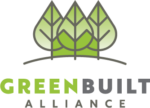Simple Shifts: How Creature Comforts Can Coexist with Sustainability
Garret K. Woodward
At first glance, the new Green Built Home on Hawberry Court in Asheville appears to be a normal house with a lot of aesthetically pleasing qualities and spacious appeal amid its luxurious appearance.
“We built a pretty mainstream home,” said Jody Guokas, owner of Asheville-based JAG & Associates Construction. “You wouldn’t look at that house and think it’s a super energy-efficient net-zero home. It just looks like a nice, custom home.”
With three bedrooms and two and a half bathrooms on about an acre of land, the 2,400-square-foot home attained Green Built Homes’ Platinum Net Zero level of certification and a HERS Score of 9. It wasn’t initially envisioned as a net-zero property, but it became such with a few tweaks by Guokas.
“The homeowners were interested in building a sustainable house, but they also just wanted a new home, so the design was not going to be driven by that desire for net zero,” Guokas said. “One of my goals with building is that we don’t have to make green or sustainable this funky, weird thing. You can achieve any sort of goal or style and make it sustainable. If you bring intention to become sustainable or net zero, you just have to make some design decisions in that direction.”
In terms of green initiatives in the design, Guokas followed the usual lines of ENERGY STAR® and Green Built Homes standards, which have become the standard for a vast number of new homes in the Western North Carolina area.
“Most of it was implementing our standard building practices,” Guokas said. “It’s all 2-by-6 exterior walls. It’s going to be well air-sealed with increased insulation and air sealing in the roof system, as well as conscious of what kind of tight and energy-efficient windows we’re using and the kind of efficient HVAC system that’s installed in accordance to those programs.”
The house incorporates six inches of open-cell spray foam in the roof, R19 fiberglass in the exterior walls, and Superior Walls with an additional R19 in the basement, which makes the basement walls R31 (with R12 under the basement slab).
But Guokas didn’t stop there and went the extra step to bring the home to net zero.
“With that baseline of Energy Star and Green Built Homes standards, it’s going to bring a home much closer to a more exceptional mark like being net zero,” Guokas said. “So, you take that baseline and add in some more initiatives — put more insulation in the roof system, install solar panels on the roof — and that’s how you go from energy efficient to net zero.”
Another key component to the property was its south-facing slope, which made for an ideal orientation with the passive solar design when the home was placed to aim toward the sun.
“It’s a photovoltaic solar electric system. Basically, the only way to get to net zero is to actually produce electricity on the home with solar panels,” Guokas said. “We can make the house incredibly efficient, but, at some point, we still need power for the lights, refrigerators and appliances.”
Although north-facing slopes are less ideal, Guokas says there can still be a path toward net zero on those properties.
“If you have a north-facing slope that has bad orientation, you’ll have to do more insulation and solar panels because you’re not getting as much free energy as the sun gives you on a good solar site,” Guokas said.
While this project was a straightforward and easygoing process, Guokas emphasizes how nowadays you can achieve net zero even within a relatively conventional house design — one that maintains creature comforts and room to move around.
“You can do a house that’s fairly mainstream, but you can take that home and make it sustainable. For people who are not sustainable and green buyers, there can be this turnoff of, ‘Well, I don’t want to pay extra to be green,’” Guokas said. “But, the truth is, you can build a pretty normal house at a pretty reasonable price. What you’re paying for is energy efficiency and comfort, which will save you money in the long run and make for a house that is more comfortable to live in.”
To learn more about JAG’s building and design process, visit jaggreen.com.
You can also view this article as it was originally published on pages 24-25 in the 2019-2020 edition of the directory.

